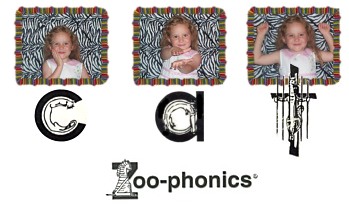Programs
Quality in Education
“Quality is never an accident; it is always the result of high intention, sincere effort, intelligent direction, and skillful execution; it represents the wise choice of many alternatives.
Willa A. Foster
Direct Instruction
A method of instruction initially developed by Siegfried Engelmann while teaching his own children in the 1960s, and refined and field-tested with thousands of learners. A primary feature setting Direct Instruction apart from most other curriculum packages is that the Direct Instruction curriculum is field-tested with children and modified to ensure effectiveness. The teacher is in face to face contact with the students, often in small groups in a semi-circle. The teacher is in control of the interaction, telling, showing, modeling, demonstrating and prompting rapid active responding of the learners. Teachers follow carefully constructed scripts that have been designed to maximize learning and minimize confusion through faultless instruction. Implementation involves frequent systematic assessment. For example, a teacher is required to ask 300 or more questions each day, and to check to ensure that children are at 100 percent mastery in reading every five or ten lessons.
American Federation of Teachers, 1998
Zoo-Phonics
Zoo-phonics facilitates retention/acceleration of information for the following populations:
- At-risk
- Special Education
- Preschool
- Headstart
- Kindergarten
- First grade
Zoo-phonics facilitates retention/acceleration of information for the following populations:
- At-risk
- Special Education
- Preschool
- Headstart
- Kindergarten
- First grade
- GATE
Zoo-phonics: This “systematic, multi-modal approach focuses all the energy of primary learners on learning the sounds of the alphabet and phonemes ensuring reading and spelling success!” Zoo-phonics is the needed link to ensure that at-risk students receive the systematic, explicit phonological and phonics instruction so that they may have access to the core curriculum. Access to the core curriculum, for special education students, is a legal mandate for special education students under IDEA.
- The essence of Zoo-phonics:
- Introduces animal shapes which correspond to lowercase letter shapes
- Teaches letter sounds before letter names
- Introduces a body signal which is associated with each animal
- Teaches the lowercase letters first
- Initially treats the alphabet as a whole, always going from “a-z”
- Teaches short vowels before long vowels
- Makes the abstract concrete through the animals, stories, puppets, dances, and games.
Zoo-phonics “uses childrens’ natural tendencies to wiggle and incorporates multi-modalities to ensure that students are able to access and retrieve the essential information needed for fluency and automaticity in reading.”
The integration of Zoo-phonics will provide the necessary support for students to accelerate through the core curriculum. In addition, it will enable schools to be in compliance with the legal and moral mandates that are changing the service delivery model for literacy.
Zoo-phonics provides the critical areas of effective reading instruction which include an effective reading program, early intervention & prevention, assessment that drives instruction, access to the Core Curriculum, and practices linked to research.

